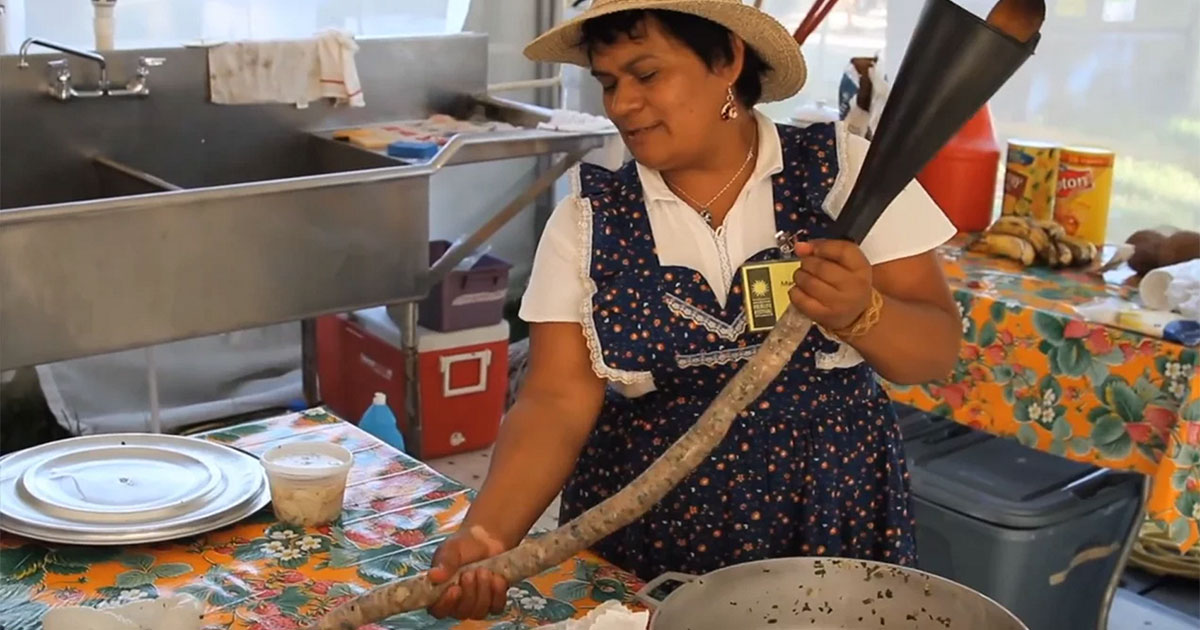
Foodways demonstrations provide a very sensual venue for examining celebrations as well as the everyday life of a family, a community, or a region. We learn about techniques, utensils, aesthetics, and codes of behavior in the way cooks prepare and present dishes. In some regional specialties, we can see the blending of different cultural heritages. Through ingredients, we learn about the environment, local resources, and trade patterns. Foodways presentations can also lead to discussions on language and gender roles.
In the Colombia program, foodways was key to addressing the relationship between culture and nature. It highlighted the agricultural products of the Andean Highlands, the beef associated with the ranching traditions of the Plains, the use of cassava both in the Amazonian Rainforest and in the Momposino Depression, and the traditions of cooking fish in the different coastal and river areas.
While discussion of the process and ingredients is important, the presenter for food demonstrations should focus on:
- The meaning of tradition for the participants
- How this tradition forms part of the community's history and economy
- What is the food etiquette in the culture – serving and eating food in the family or with guests
- What are the differences in cooking at the Festival and back home
The presenter's challenge is to know when to talk and when to let the participants explain for themselves without breaking their concentration on what they are doing. A good strategy is to maintain a running conversation occasionally asking both the cook and the audience questions that can help contextualize the presentation.

